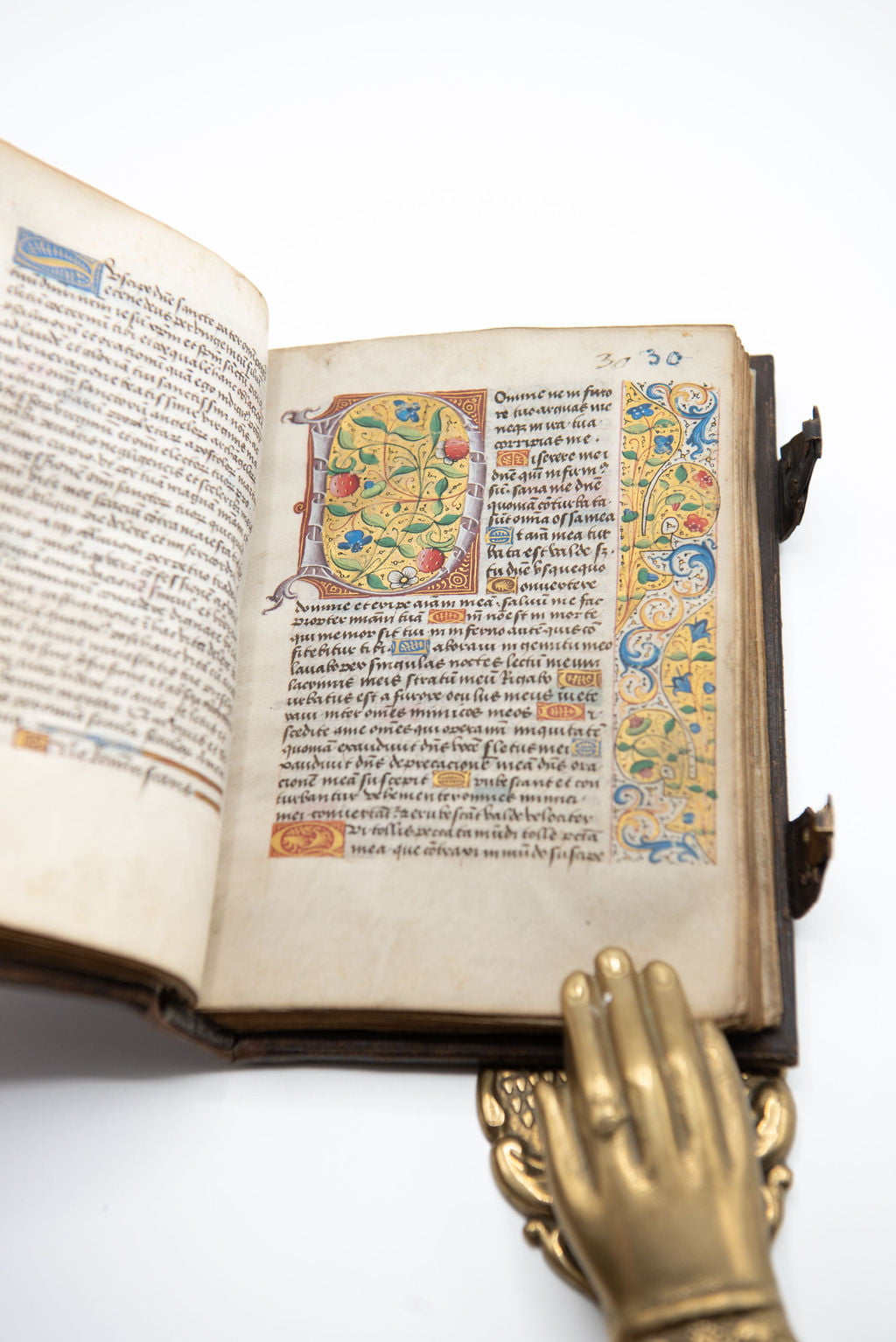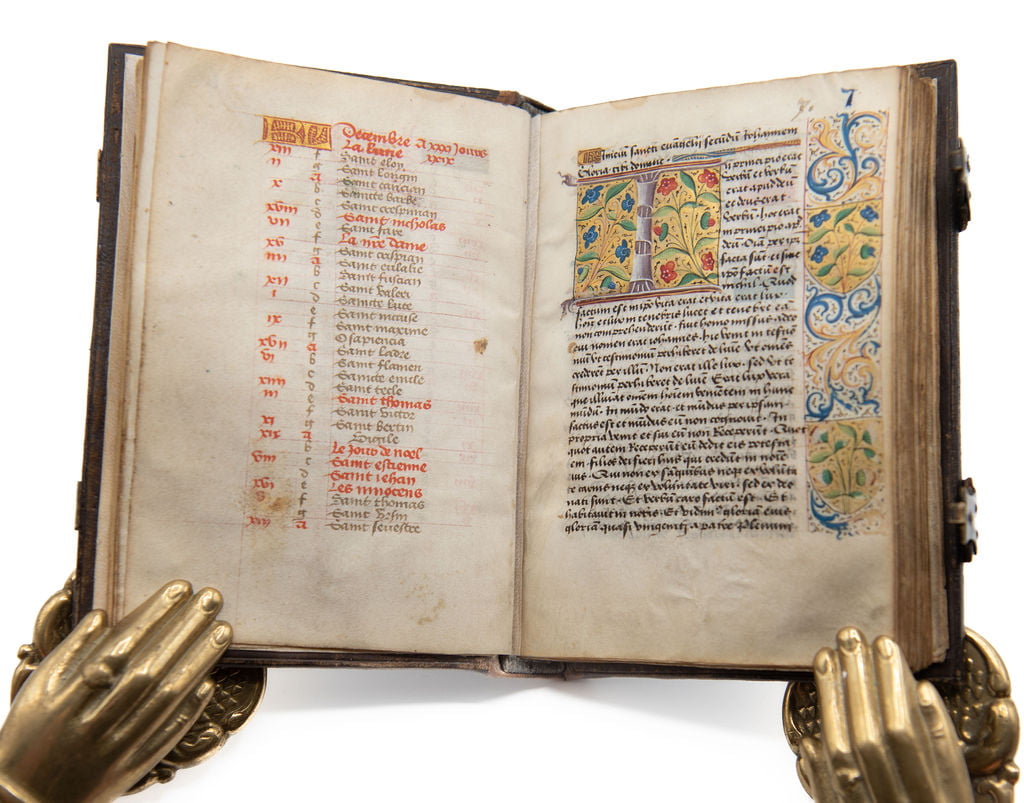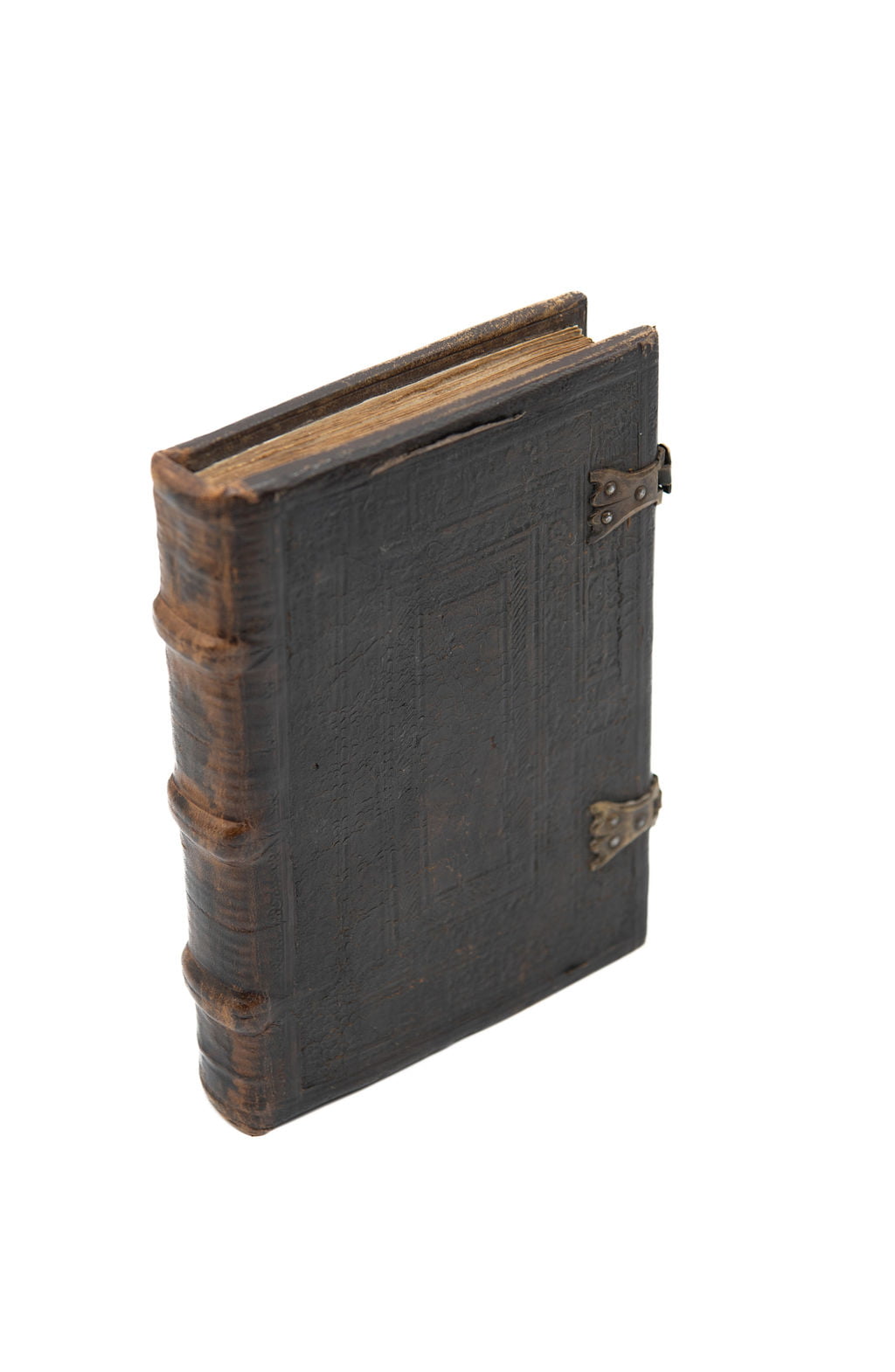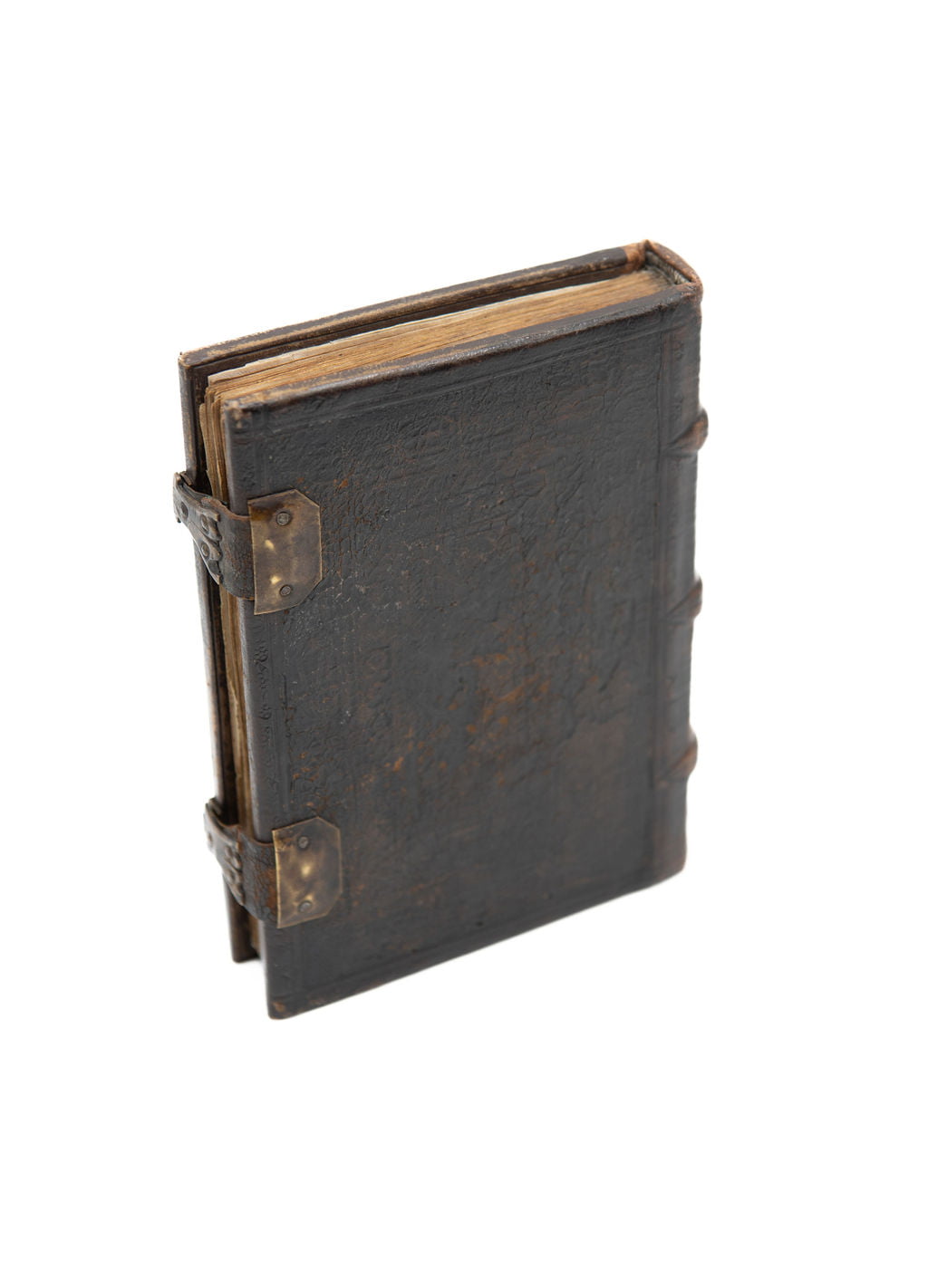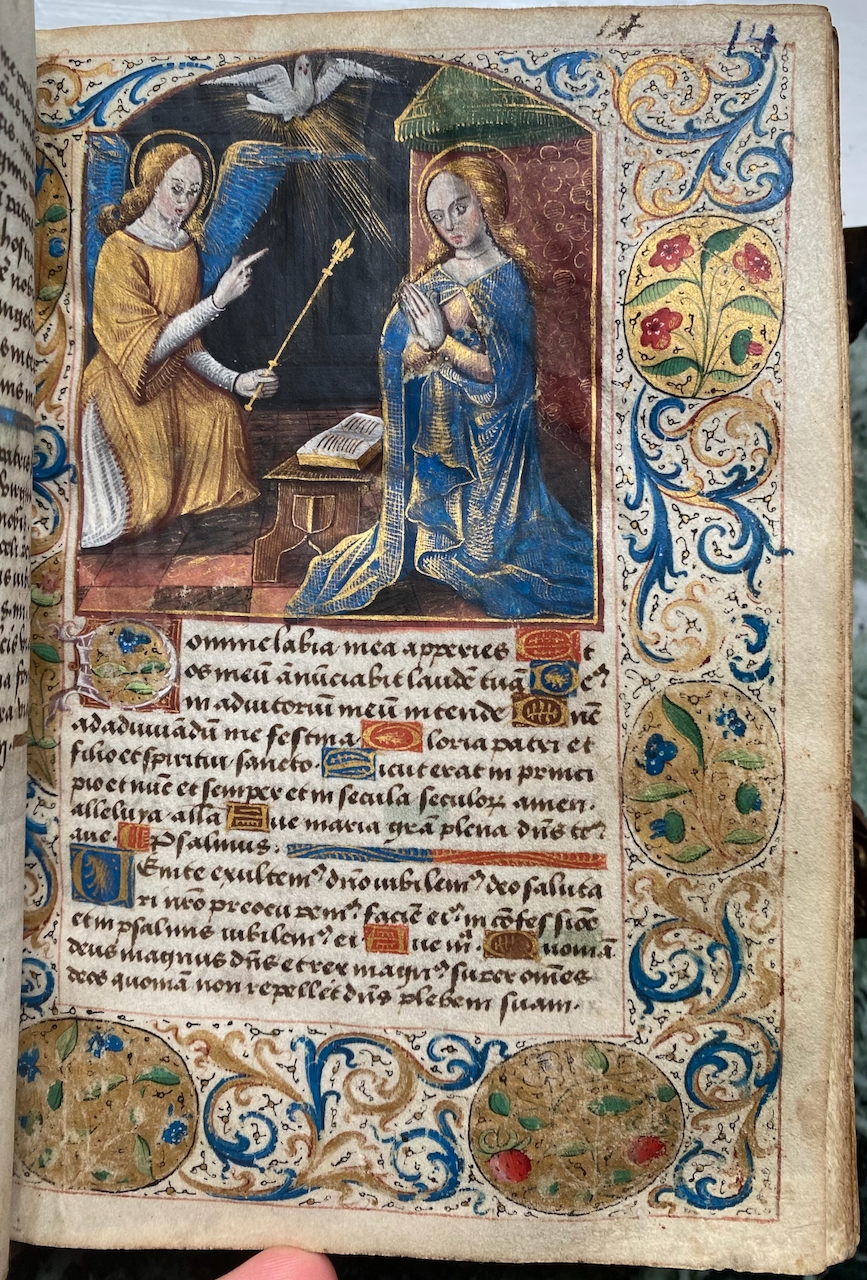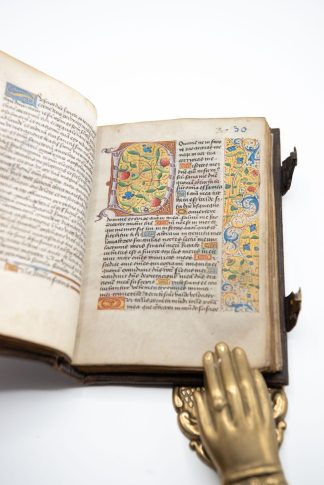BOOK OF HOURS
FROM THE FRENCH RENAISSANCE
Book of Hours, Use of Angers, in Latin and French, illuminated manuscript on vellum
[northern France, (probably Paris, perhaps Angers)], [c. 1510]£39,500.00
8vo, 155 x 112mm, 101 leaves (plus two original endleaves at back), complete, collation: i6, ii-xii, xiii7 (last leaf a cancelled blank), foliated in blue ink (probably in seventeenth or eighteenth century), single column of 30 lines in a squat and angular professional bookhand, small initials in liquid gold on square blue and red-brown grounds (some 2-line ones enclosing flowerheads picked out in gold paint), with linefillers in same, ten large initials marking each major break in text (7 to 10 lines in height) in soft purple bars encased within ribbon-like curls all edged with white penwork, on dull gold grounds enclosing realistic foliage sprays terminating in flowerheads and strawberries, each initial within a coloured frame heightened with liquid gold penwork and with a decorated outer border of gold and coloured acanthus leaves and foliage on blank parchment or dull gold grounds, occasional text leaves with similar decorated text borders, single half-page arch-topped miniature opening the Hours of the Virgin, framed with a thin gold bar, full decorated border as previous, slight flaking of paint from Virgin’s robe and angel’s face, slight scuffing to borders in a few places, last few leaves slightly cockled,but overall in good and presentable condition.; contemporary French binding of tooled brown leather over wooden boards (these weathered and crackled, and boards re-edged and spine rebacked), two working metal clasps.
Text:
The volume contains a Calendar (fol. 1r); the Passion readings from the Gospel of John (fol. 7r) and prayers including the “Egressus est dominus …”, “Ave mundi spes maria …” and “Saluto te sancta virgo …”; the Hours of the Virgin (fol. 14r), with Matins, Lauds, Prime, Terce, Sext, Nones, Vespers and Compline; the Seven Penitential Psalms (fol. 30r) followed by a Litany; the Office of the Dead (fol. 40r; Use of Angers) followed by prayers and suffrages to saints.
Illumination:
The single miniature in this volume is that of the Annunciation to the Virgin, in which the high dome-like heads of the figures, as well as their ivory-white skin-tones and the close composition of the scene, show the strong influence of the royal court artist Jean Bourdichon (1457/49-1521), whose style dominated the art of the northern French elites throughout the first half of the sixteenth century.
What is remarkable here, and unlike most other Books of Hours, is the influence of French Renaissance decoration in the larger initials and script which would be more at home in a grand illuminated text manuscript (cf. the contemporary Haimo of Auxerre, Expositio in epistolas Pauli, made for Jean Budé, royal secretary: sold in Sotheby’s, 29 June 2007, lot 37, then Les Enluminures, cat. 15, France 1500, no.16). This opulent art style was brought to France by François Ier from Italy, and popularised by his court as part of a programme to plant “une nouvelle Rome” on French soil.
Provenance:
1. Written and illuminated in High-Renaissance style during the period in which the extravagant patronage of François Ier and his court established the French Renaissance as an art movement in itself. The commissioner was from Angers in Central France (both uses of Hours of the Virgin and Office of the Dead in that form), but the decoration, the presence of SS. Genevieve and Denis in red in the Calendar, and the history of the book, all suggest an origin in Paris. The last pages, originally blank, have sixteenth-century devotional material added to them as well as the apparent signature “De Nully”(?) of that date.
2. Thence donated to the library of the royal Abbey of Saint-Antoine, Paris (also Saint-Antoine-des-Champs-lèz-Paris; see H. Bonnardot, L’Abbaye royale de Saint-Antoine des Champs de l’ordre de Cîteaux 1882, and É. Raunié, ‘Abbaye royale de Saint-Antoine-des-Champs’, in Épitaphier du vieux Paris, 1890): their seventeenth- or eighteenth-century ownership inscriptions at head and sides of first leaf of Calendar, “Ex Libris Domus S. Antonii Parisiensis”; they also owned a thirteenth-century Gospel Book, now Paris, Bibliothèque de l’Arsenal, MS. 613, but otherwise books from their library appear to be rare. The absence of St. Anthony suggests that the book was made for a patron outside of this community and then given to it later. The abbey was founded by the mid-twelfth century as a community of Cistercian women, following preaching by the reformer Foulques de Neuilly at a chapel dedicated to St. Anthony just outside the eastern gate of Paris – the present suburb of the city named Faubourg St Antoine grew up around them and is based on their estates. The house came under royal protection and enjoyed the patronage of wealthy citizens of Paris and leading members of the university there, and by the end of the Middle Ages it was one of the wealthiest female communities within the Cistercian Order. It was suppressed in 1790, and its goods and chattels dispersed.
In stock


